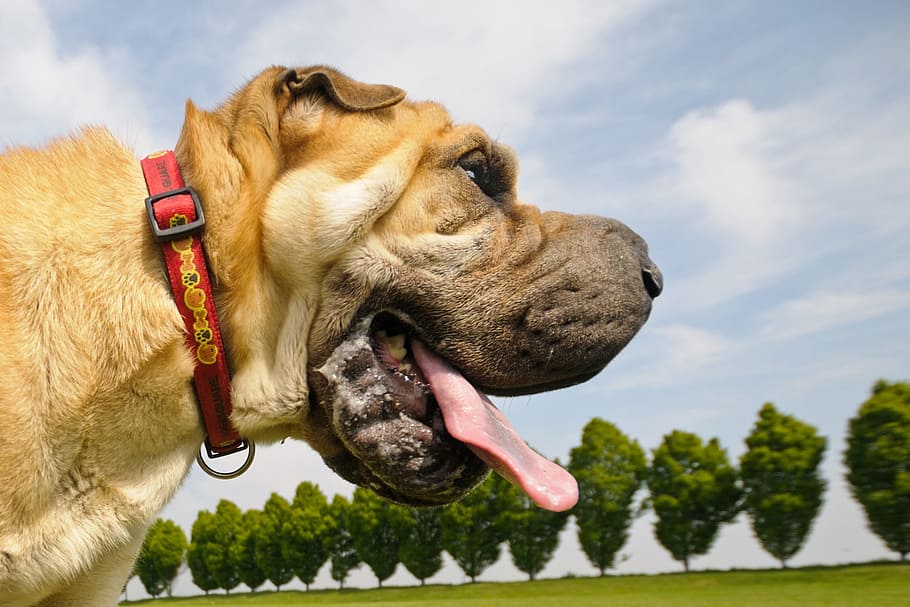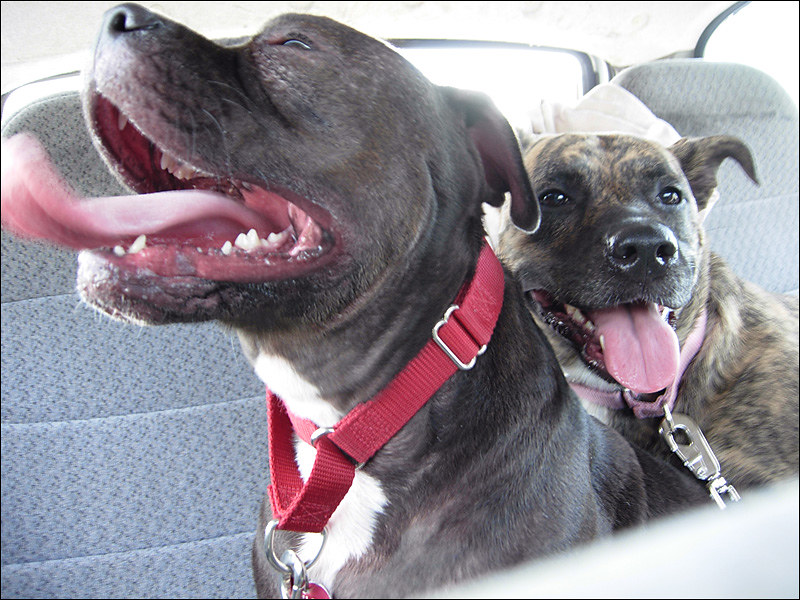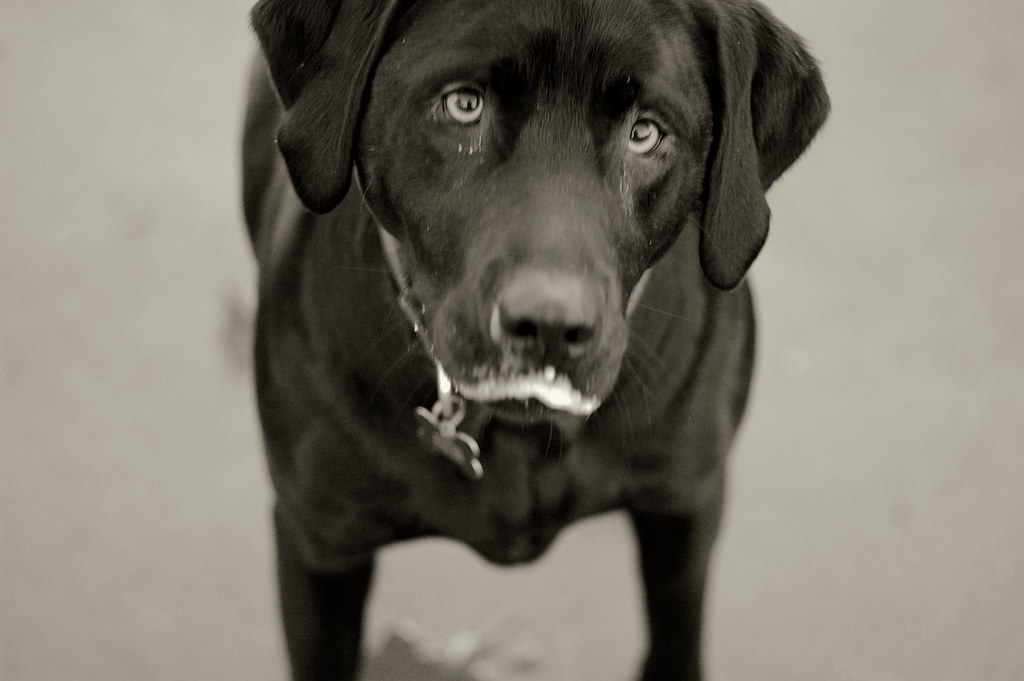Why Do Dogs Slobber In The Car ?

Why Do Dogs Slobber In The Car :- Dogs, renowned as man’s faithful companions, often become integral parts of our families, joining us on various adventures, including car rides. However, for some pet owners, the joy of bringing their furry friends along is dampened by the issue of excessive drooling during the journey. In this insightful piece, we delve into the underlying reasons behind this canine quirk and offer practical solutions to alleviate it.
One prevalent cause of drooling in dogs while traveling stems from motion sickness. Much like humans, our canine companions can succumb to feelings of nausea and discomfort when the vehicle is in motion, resulting in a noticeable increase in drool production. Similarly, anxiety plays a significant role in triggering drooling episodes, particularly in dogs unaccustomed to car travel, who may find the experience overwhelming.
Fortunately, there are proactive steps owners can take to mitigate this issue. Employing a sturdy dog safety harness ensures their furry co-pilots remain secure and at ease throughout the journey. Creating a serene environment within the vehicle, characterized by subdued noises and optimal temperature, can further promote a sense of calm for the canine passengers. Moreover, implementing pre-travel routines such as a brisk walk and timely feeding schedules, at least three hours before embarking on the journey, can effectively ward off motion sickness.
By understanding the root causes of drooling in the car and implementing practical strategies to address them, pet owners can ensure a smoother and more enjoyable travel experience for both themselves and their beloved four-legged companions.

Why Do Dogs Slobber In The Car What causes motion sickness?
To start, it’s crucial to grasp the mechanics behind motion sickness, a phenomenon that affects dogs much like it does humans.
Motion sickness arises from the stimulation of the ear’s vestibular system, responsible for maintaining balance and stability. Once a dog experiences the discomfort of motion sickness, merely entering a vehicle can trigger a wave of anxiety.
Now, let’s explore some practical strategies to help your furry companion manage motion sickness and alleviate associated stress and anxiety. It’s worth noting that puppies tend to be more susceptible to car sickness due to their underdeveloped inner ear, but adult dogs can also experience this issue, sometimes leading to an aversion to car travel altogether.
What is Drooling in the Car?
When your dog starts exhibiting excessive drooling, medically termed ptyalism, various factors may be at play, including:
- Motion and car sickness: Just like humans, dogs can experience motion sickness during car rides, leading to increased drooling.
- Oral health issues: Mouth diseases or tooth decay can also contribute to excessive drooling, potentially exacerbated by the stress of car travel.
- Heat stroke: In hot conditions, dogs may drool excessively as a means of cooling down, particularly if the car interior becomes too warm.
- Excitement and anxiety: Dogs may drool when they’re overly excited or anxious, which can be triggered by the anticipation of a car ride or unfamiliar surroundings.
- Other potential causes: Additionally, there could be other underlying health issues or external factors contributing to your dog’s excessive drooling in the car.
Dog Breeds and Drooling
Certain canine breeds have a predisposition to drooling owing to their anatomical features. Breeds characterized by loose lips, referred to as flews, often exhibit more pronounced drooling tendencies. Notable examples include Bloodhounds, Saint Bernards, and Mastiffs, whose abundant skin around the mouth impedes their ability to contain saliva, leading to increased drool.

Furthermore, breeds with short snouts, like Pugs and Bulldogs, face challenges in swallowing saliva efficiently, thus contributing to heightened drooling.
Why Do Dogs Slobber In The Car When is it Normal for Your Dog to Drool Excessively?
Certain dog breeds are notorious for their chronic drooling tendencies. The Bulldog, Saint Bernard, Basset Hound, Newfoundland, Bullmastiff, Great Dane, Boxer, Labrador Retriever, and Bloodhound are among those known to produce copious amounts of saliva even during mild excitement or anxiety.
These breeds possess ample skin around their mouths, serving as reservoirs for saliva that inevitably drips and splashes, often leaving unsuspecting owners with drool-covered slippers, feet, or even faces, particularly during joyous reunions.
Living with a chronic drooler entails embracing a perpetually moist environment, regardless of your geographic location. Keeping a “drool rag” within reach becomes a necessity, especially when entertaining guests, to spare them the unexpected blessings of your beloved pup’s enthusiastic salivary expressions.
Natural remedies that might also help with car sickness:
Exploring additional avenues to alleviate your dog’s motion sickness is prudent, though always consult your vet before introducing new remedies.
Ensuring your furry companion has a comfortable and secure spot in the car is crucial. Consider investing in a pet booster seat with a window slightly cracked open, providing stability and preventing slipping during the journey.
Some dogs find relief from motion sickness with the aid of calming herbs like ginger or products such as Rescue Remedy Drops and Sprays. These natural remedies can promote a sense of tranquility during car rides.

Experimentation may be necessary to find the most effective solution for your dog. Start by trying individual remedies and then consider combining them to gauge their combined efficacy.
By taking a systematic approach and being attentive to your dog’s response, you can tailor a regimen that addresses their specific needs and ensures a more comfortable and enjoyable car travel experience.
Why Do Dogs Slobber In The Car When Drool Might Signal a Bigger Problem
While some level of drooling is considered normal in dogs, excessive drooling can sometimes signal underlying health issues. Here are potential causes of heightened drooling and how to assist your furry companion:
- Mouth and throat issues: Difficulty swallowing could lead to excessive drooling, stemming from conditions like tumors, plaque buildup, or neurological/muscular disorders. A vet consultation is crucial for diagnosis and treatment, which may involve blood work, X-rays, or ultrasound. In severe cases, IV fluids and nutrition may be necessary to ensure proper hydration and nutrition.
- Tooth decay: Dental problems such as decay can cause drooling along with discomfort, chewing difficulties, or infection. Regular dental exams and teeth cleaning by a vet are essential for preventing tooth decay. Enzymatic toothpaste can help maintain oral hygiene.
- Stomach issues: Digestive problems can trigger drooling, indicating potential poisoning or conditions like bloat, which requires urgent medical attention. Bloat occurs when the stomach fills with gas and may twist, necessitating stomach pumping or surgery.
- Heat stroke: Excessive drooling and panting may indicate heat stroke, emphasizing the importance of providing cool shelter and ample water in warm weather. Never leave pets unattended in hot cars, as it can lead to fatal consequences.
- Kidney disease: Symptoms like changes in water consumption, urine output, blood in urine, or a chemical odor may signify kidney disease. Early detection is crucial, and treatment options may include medication, dialysis, or dietary adjustments.
If your pet experiences additional symptoms like bad breath, gagging, or rapid weight loss, seek veterinary attention promptly. A thorough examination and diagnostic tests will aid in determining the underlying cause and crafting an appropriate treatment plan, which may involve surgery, medication, or dietary changes.




